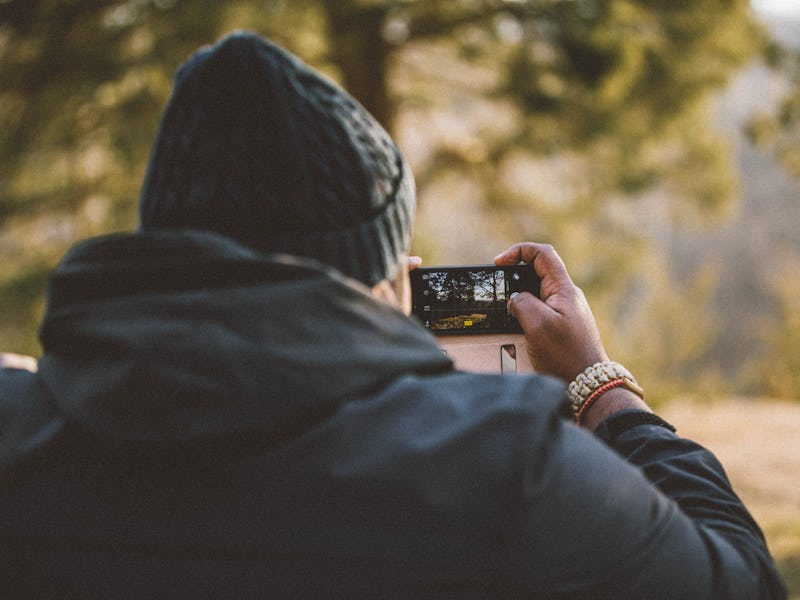Google Pixel 3 vs. LG V40 ThinQ: How the 2018 Smartphone Cameras Compare
Is multi-lens or A.I. the way to go?

Two cameras might soon be too few. Smartphones like the LG V40 ThinQ have included triple rear camera arrangements marketed as offering a professional photographer’s tools to anybody who uses it. But the Google Pixel 3 has done the opposite, opting for a single rear camera that it has augmented using artificial intelligence.
Both take stunning pictures but have differences one should consider when looking for the best smartphone camera. LG’s multi-lens set-up will always have an edge in zooming, but Google’s A.I. solution gives users more control after the picture has been taken. So, can software do the trick, or are we destined for handsets that all look like Ted Pauley from Monsters, Inc.?
What your phone could look like in a few years.
In the end, phones are largely determined by preference. Do you want a utility belt of lenses at your disposal? Do you want A.I. to do most of the work and suggest filters? This year’s smartphone launches offer these options and more.
LG V40 ThinQ: All-in On Multilens
The LG V40 ThinQ packs five cameras total.
LG has thrown five cameras in its new V40 ThinQ, three on the back and two in the front. LG product manager Kyle Yoon has told Inverse that more lenses mean the LG can keep the phone thin instead of having to bulk up the silhouette to accommodate bigger sensors.
“To improve the range of apertures and exposures our phones are capable of we had to either increase the size of the lenses or add more cameras,” Yoon says. “We went with the latter, to keep the V40 ThinQ as slender as possible and provide an extensive photography tool kit.”
On the back of the LG V40 ThinQ lies a standard 12-megapixel lens, a wide-angle 16MP sensor for expansive shots of architecture or nature, and a 12MP telephoto lens capable of 2x optical zoom for portraits or close-up shots.
If you flip the V40 ThinQ around, you’ll find an 8MP standard lens and a 5MP wide-angle sensor housed inside of its top notch. The wider lens will let allow more people to fit in a selfie, so the person with the longest arm doesn’t always have to be the one snapping the photo.
If users don’t want to sit and decide which lens will be best for the occasion, they could just use them all. Triple Shot Mode will take a photo on all three lenses so you can decide which one looks better before you post on Instagram. The V40 ThinQ also touts some machine learning-enabled feature, like A.I. Cam, that suggests four filters based on the photo. But nothing quite leverages A.I. technology like the Google Pixel 3.
Google Pixel 3: The Software Solution
The 2017 Pixel 2 has been said to have a better camera than the iPhone XS. The Pixel 3 has the same camera, plus improved A.I. capabilities, which will put it in the running for best smartphone camera of 2018.
Google’s flagships have a total of three cameras, one in the back and two in the front. The rear-facing, wide-angle sensor clocks in at 12.2MP the the same resolution as the Pixel 2. The only notable difference is the addition of a 8MP “ultra-wide” camera in the front to compliment the 8MP wide-angle camera that came with the Pixel 2.
The Pixel 3, on the right, next to the Pixel 3 XL, on the left.
Much like the V40 ThinQ, the addition of a wide lens in the front allows for more spacious selfies, but the rear cameras are where you’ll find the biggest differences. For starters, the LG device will have a clearer zoom than the Pixel 3, and that’s thanks to the telephoto lens.
The Pixel 3 makes up for the lack of this lens with a “Super Res Zoom” feature that combines multiple frames into a single image, resulting in more detailed shots. Google claims that Super Res Zoom can result in resolution “equivalent to optical zoom…at low magnifications like 2x or 3x and in good lighting conditions,” in a blog post. However, software features like Top Shot and Night Sight take the Pixel 3 to the next level.
Top Shot works a lot like Apple’s Live Photo feature. For each image you take the phone captures multiple frames before and after you shutter the phone. This way if you blink or move instead of having to take the photo all over again, there are multiple other options for you to choose from.
While Night Sight has yet to be released, it will use A.I. to brighten up a dark photo without the need of a flash. Google showed off its yet-to-be-released camera feature against the iPhone XS’s low light camera mode and it absolutely blew Apple out of the water. If this feature delivers what it promised, it could change the game for those dark bar photos.
So whether you go down the multi-lens route or A.I.-enabled road, rest assure that all of these handsets have the features you need to take fantastic images.